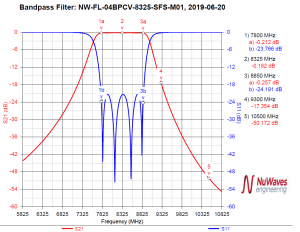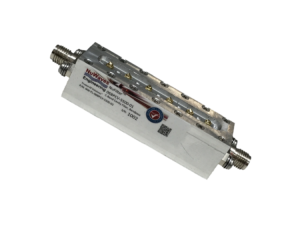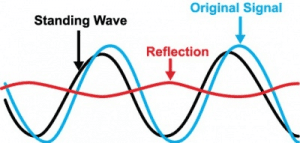Why is RF filtering so important? Simply put, filters reduce the interference in the environment that affects the performance of the communication system and reduce the interference caused by the communication system. Once you have identified the system level need for a filter, it’s now time to determine which filter response type will accommodate your other system level requirements. At NuWaves, the most commonly utilized response types are the Chebyshev, Bessel-Thomson and Butterworth. These are carefully chosen after a thorough review of the customers’ specifications and requirements. Below is a quick overview of these filter response types and their implications on the overall system performance.
The Chebyshev filter is the most common filter response used to fill customer requirements. For applications the require high out-of-band rejections, or for those that require stopband rejections close in to the passband corner, the Chebyshev filter is the right choice. This response type provides for steeper roll-off (attenuation) to stopband frequencies, with the draw back being that it can create large variation in group delay flatness.
 Figure 1: An example of a cavity comb-line filter that utilizes a Chebyshev filter response type.
Figure 1: An example of a cavity comb-line filter that utilizes a Chebyshev filter response type.
The Bessel-Thomson filter type is another type used to fill a customer’s requirement. This filter type provides for the maximum group and phase delay flatness, allowing the filter to preserve the input waveform shape. For a given percentage bandwidth and order, this type provides for the lowest attenuation in the stopband. The drawback to the Bessel-Thomson filter type is that is does not preserve amplitude flatness.
The Butterworth response type is another approach commonly taken to ensure that the filter will integrate properly into the higher-level system requirements. This filter type provides for better group delay flatness, overshoot, and lower (or absent) passband ripple when compared to the Chebyshev filter type. The drawback to a Butterworth filter is that it has a much slower roll-off to the stopband and can require a higher order filter to achieve a desired attenuation at the stopband frequency.
 Figure 2. An example of an effective RF filter is NuWaves’ C-Band Cavity Filter. This filter only allows signals in the 5.8 GHz frequency band to pass through, reducing out-of-band interference received by a receiver, or radiated by a transmitter.
Figure 2. An example of an effective RF filter is NuWaves’ C-Band Cavity Filter. This filter only allows signals in the 5.8 GHz frequency band to pass through, reducing out-of-band interference received by a receiver, or radiated by a transmitter.
Selecting the correct filter type is important to the overall system performance. Taking the time to understand the impacts to the overall system requirements, including the requirements of a given waveform, are important when choosing which filter response type will result in a successful integration.
If your UAS communication system is not meeting the expected performance, consider giving NuWaves a call about adding filters to your design. Filters are easy additions to the system: filters can be small and lightweight, do not require electrical power to function, and are generally low-cost items. Filtering can make a significant difference in the performance of your UAS.
NuWaves RF Solutions has developed a wide variety of off-the-shelf RF amplifiers with rich features to support mission-critical CONOPS in telemetry, ISR, and tactical communication systems applications. Frequency ranges are available from UHF through C-band with output power levels ranging from 5 to 50 W. All NuPower PAs are designed, built, and tested in-house under NuWaves’ Quality Management System (QMS) certified to AS9100:2016 and ISO 9001-2015 standards, which ensures that each product arrives on-time and defect-free. Most models are in-stock. NuWaves also boasts a full suite of state-of-the-art design and simulation tools, test and measurement equipment, prototyping equipment, and a full-scale production facility to provide custom solutions to your specifications. Contact NuWaves today to extend the range of your communications systems and don’t forget to check out our RF Power Amplifiers.



2 comments
AffiliateLabz
Great content! Super high-quality! Keep it up! 🙂
Best SEO Services
Awesome post! Keep up the great work! 🙂
Comments are closed.